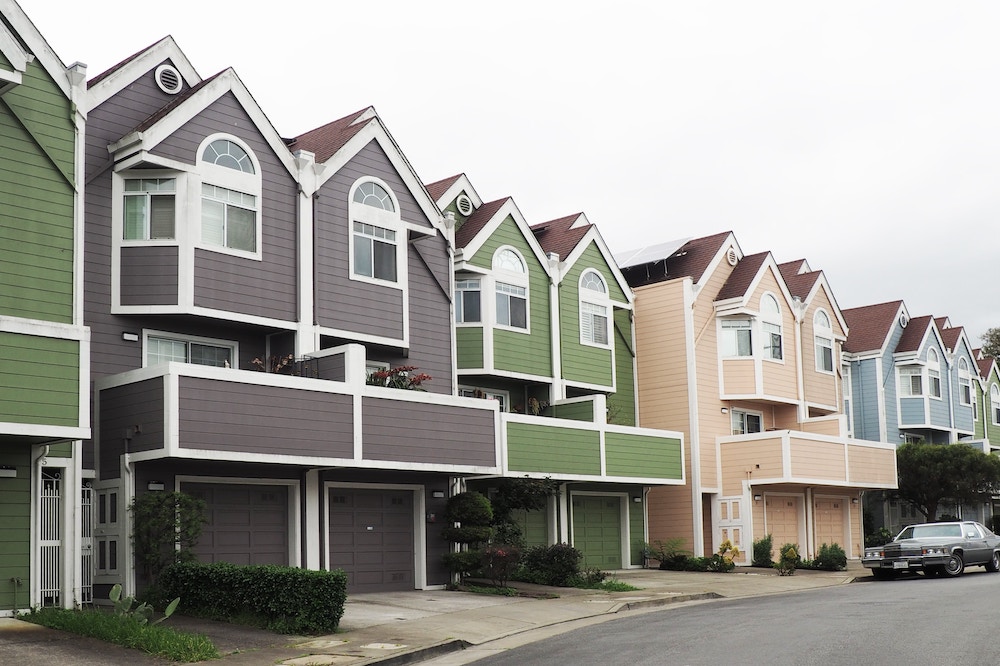5 Real Estate Trends for 2022

2021 is almost over. As we look forward to what will hopefully be a much better and healthier year, here are 5 trends we are watching at eProperty Innovations and some conjecture about what might happen – or should. Click any headline to see what we have to say and get in touch if we can help you confront your 2022 vacant housing hurdles.
Trend 1: Inventory is – and will be - in short supply. Tight markets are sellers’ markets
The biggest trend from 2021 is how scarce real estate is in many places. We don’t see this changing in 2022.
Land banks and holders of surplus property inventories of all kinds will get second and third looks from buyers. Investors will also keep looking for bargains in tax deed and tax lien sales. Organizations holding surplus property will want to update their marketing and sales processes to meet higher demand. Sellers will also want to consider ways to generate dynamic pricing, such as online auctions. These methods can help sellers capitalize on strong demand by securing better prices.
Affordability will continue to be a real challenge. Beating back threats from profit-seeking investors and buyers will be tough, but tools like land trusts can help. Housing nonprofits can purchase tax liens and tax deeds and may want to compete for properties against the investors who speculate in tax sales. Groups holding property may want to consider rehabbing it and leasing it, at least in the short term. In places where there is an appraisal gap, leasing property may make the most economic sense.
Trend 2: Will high materials costs and labor shortages elevate preservation and modular housing?
The supply chain issues we read about in 2021 have abated slightly, but we don’t see the high materials costs or labor shortages brought about by COVID-19 abating any time soon. In 2022, we hope and expect that preservation and rehab of existing properties will gain favor, as compared to demolition. We expect to see more organizations embrace modular or panelized construction. Construction costs for modular housing are about the same as the costs of stick-built, but homes can be built much faster and with more precision. This translates to shorter delivery times and cost savings on labor. Modern modular housing also tends to be very energy efficient, which translates to cost savings for the future owner. We are seeing more and more examples of attractive modular housing that blends nicely into neighborhoods and expect more groups will embrace modular construction in 2022.
Trend 3: Alternative (re)uses for vacant land will require thoughtful execution and staffing.
Given high materials costs and labor shortages, developers building on vacant lots and land may require (deeper) subsidies to make numbers work for affordability. The trend toward higher density-uses, whether through changes in zoning or creation of pilot ADU programs, will likely continue. Groups holding inventories of vacant lots and land may attract strong offers in strong neighborhoods. It may be tough to dispose of vacant lots in weaker neighborhoods, though.
Alternative/long-term uses, such as parks, community gardens, or lot expansion will be more attractive as a disposition strategy. Groups may need to add staff and develop programming to deliver sustainable vacant lot reuse projects, especially for gardens, urban agriculture or urban reforestry. It won’t be enough to simply offer the lots for sale.
Trend 4: Local governments can slow aggressive home flipping with ordinances, registries, and outreach.
Property flipping has been booming in the last 2 years and we see no signs the trend will abate. Investors are sitting on cash from a strong stock market and flipping real estate is an attractive investment option, considering how quickly properties can be flipped and the considerable returns flips offer.
Following the last home flipping boom period, cities adopted ordinances that required owners of vacant and/or rental property to register their properties. We expect that those types of ordinances will be revisited or adopted to stem the purchase of homes by out-of-town investors.
In markets with strong demand for short-term rentals like AirBnB or VRBO, we’ve seen cities adopt short-term rental registration ordinances as well. That will likely continue.
Some investors may try to purchase distressed property directly from their owners. We saw this during the Great Recession and many of us are all too familiar with the hand drawn “we buy ugly houses” signs. Community outreach, advice and counsel from trusted nonprofits can help protect vulnerable owners from signing away their homes or being defrauded.
Trend 5: Local governments hold a lot of surplus property – and do a lousy job of marketing it.
We still see local governments using antiquated practices for disposing of surplus property. Among common “bad behaviors”: lengthy and cumbersome RFPs (requests for proposals), opaque and outdated PDF lists of parcels, and using a GIS system in place of a true property inventory management solution.
Local governments can achieve much better outcomes by adopting smart technology solutions and should evaluate their disposition strategy with a buyer’s perspective. The buyer wants the same experience they get at Realtor.com or Zillow. This means searchable, dynamic, and photo rich digital displays on easy to find websites. It also means supplying contextual information, such as the approved uses, zoning, or proximity to neighborhood resources. The goal is to allow the buyer to make an informed pricing and buying decision, preferably from the comfort of their home or office.
What trend are you seeing where you are? Did we overlook something? Drop us a note and let us know what you are seeing on the horizon for 2022.



